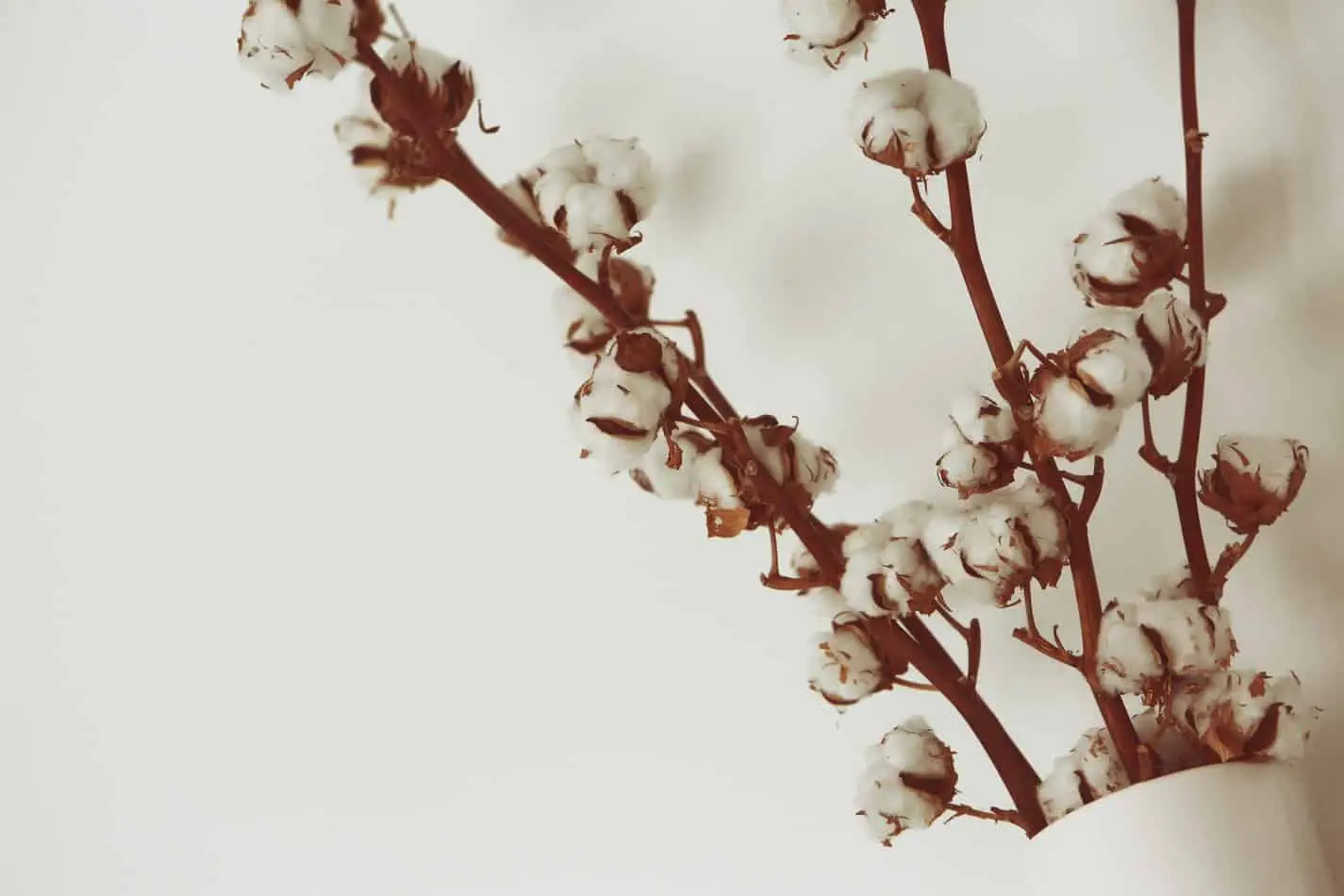Cotton is a versatile material that comes in a multitude of prices, however, we’ll break down the costs of all types of cotton, and whether there’re expensive or cheap.
Cotton is one of the least expensive fibers in the world behind such things as flax and polyester in general. The price for cotton (per pound) has remained fairly consistent at 68.80 cents between 2017-2018, 70.3 cents in 2018-2019, and 60.4 cents in the 2019-2020 marketing year.
These statistics were seen within an annual report provided by the United States Department of Agriculture between 2019-2020.
Though there are few things to consider when looking at the price of cotton as it’s not all the same (you’ve probably seen cotton t-shirts out there that weren’t exactly “cheap”…there’re reasons for this.)
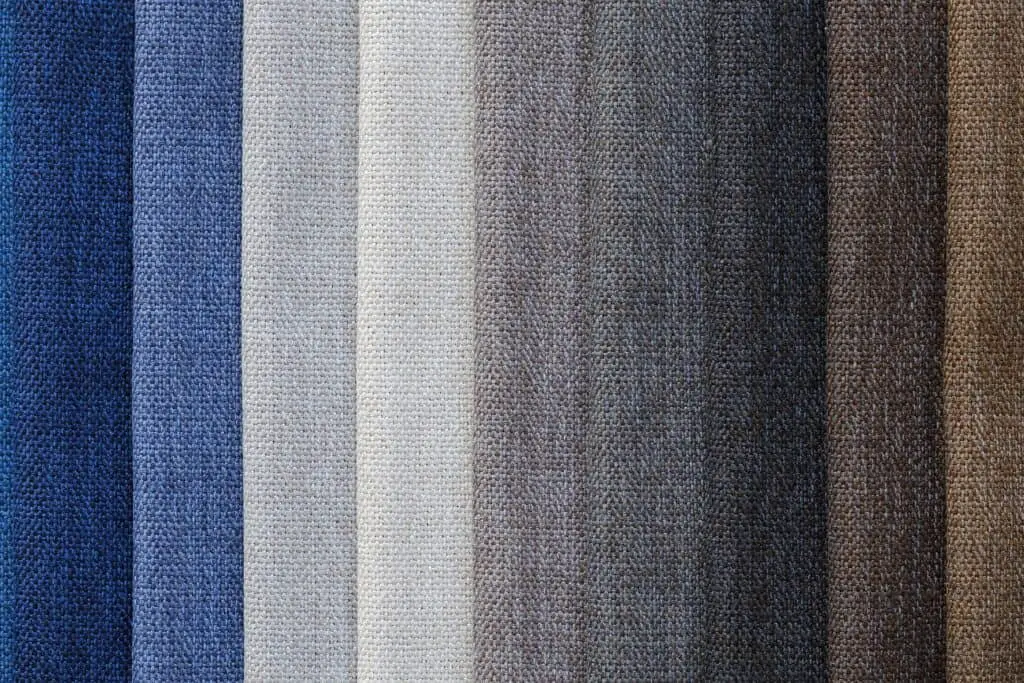
Why is cotton expensive sometimes?
Alot of the pricing for fabrics will depend on the cost of production – how are they actually making this stuff? WHERE has it been made? If its places like Egypt, then prepare to pay a pretty shilling etc. Cotton isn’t a one size fits all type.
Due to its highly versatile nature, the price of cotton will vary highly depending on factors like sustainable farming (traditional vs. organic cotton) and its grown location. Quality cotton grown in Egypt (due to its climate) will bear longer and finer pieces of cotton for higher prices.
Just like the pricier sections of produce at your local supermarket, sometimes you’ll have to pay more for an apple that wasn’t doused in pesticides and chemicals to reach the shelves – the same level of thinking applies to your cotton.
Differences between traditional and organic cotton?
The differences between how these two are grown are astounding, as you may not notice any differences per say*, the choice you go with will have an enormous impact on the globe and its efforts in regards to sustainable farming. As comparatively, traditional cotton is a lot more wasteful than organic cotton.
Traditional cotton is grown with the help of harmful chemicals that deplete soil nutrients and increase cotton wastage due to rushed (unstainable) practices. Organic cotton is grown at a slower sustainable rate to ensure quality integrity, resulting in longer and stronger fibers through lesser wasteful production methods.
Traditional cotton vs. organic cotton – differences
| Traditional cotton | |
| Seed preparation | Cultivated with GMO’s (genetically modified organisms) to meet heavy supply & demand. |
| Harvesting | Grown and harvested with heavy fertilizers and insecticides/pesticides (this also affects farmer’s health long term.) Soil depletion of nutrients occurs, as well as partial wastage of cotton through sped harvesting processes by machines. |
| Printing | Bleached with and dyed with chlorine and coloration process is exposed to high temperatures containing high levels of metal and sulfur (in order to give it that “white” look.) |
| Cotton quality | Due to rushed harvesting, traditional cotton fibres from the beginning are weakened significantly, meaning lower quality and shorter lifespan overall |
| Organic cotton | |
| Seed preparation | Grown at a slower more methodical pace with no pesticides or fertilizers used (no GMO’s.) |
| Harvesting | Slower growth rate benefits in maintaining soil nutrient integrity for longer periods of time and promotes soil fertility (also does not affect farmer health.) |
| Printing | Bleaching of cotton is done through safer methods using peroxide (over traditional chlorine.) Also, natural dyes low in metal and sulfur are used along with low impact water-based pigment printing over petroleum (used in traditional cotton.) |
| Cotton quality | Longer fibers are stronger and more durable than traditional cotton. |
The longing ever demand to meet the world’s appetite for its textiles only seeks to be more expedient each year with faster and cheaper methods used in order to meet delivery.
The problem with this lies in the manner through which this process is carried out, as with expedited measures often means “shortcuts” leading to higher profit margins for the producers, lower costs for your wallet – at the total cost of the environment.
This is why some cotton products are more/and or less expensive than others, with organic cotton likely being more pricey in most cases due to the extra attention to detail and process used to ensure strict quality control.
How to find out if your cotton is organic?
To find out if your cotton is truly organic, you must check to see if it adheres to GOTS (Global Organic Textile Standard) guidelines by looking to the “Organic” certified label on the clothing, which must contain at least 95% of certified organic fibers to be considered “Organic.”
This labeling should be easily visible where the tags are located, and should be distinguishable by its renowned symbol, which features a white t-shirt situated within a green circle.
Is organic cotton expensive?
The prices for cotton harvested through ways deemed more “eco-friendly” as organic cotton is – when compared to traditional cotton – means that the more intricate process used on organic cotton will be reflected in the slight price bump of its final retail price.
The price for organic cotton is about 20-30% higher than traditional cotton, with organic cottonseed prices ranging from 425-600 dollars per ton compared to traditional cotton’s pricing of 165-210 dollars per ton.
Figures based on the 2020 Annual Organic Market Report by the United States Department of Agriculture.
Can give average prices, along with comparison table or something with tradtional cotton prices etc.
Because of reasons like yielding less per acre than “traditional” cotton, having stricter requirements like the use of non-GMO seeds, relying on manual meticulous labor for harvesting – the cost for producing organic cotton has on average higher costs (20-30% more) when compared to traditional cotton.
How to remember it:
| Traditional Cotton | Quantity over quality |
| Organic Cotton | Quality over quantity |
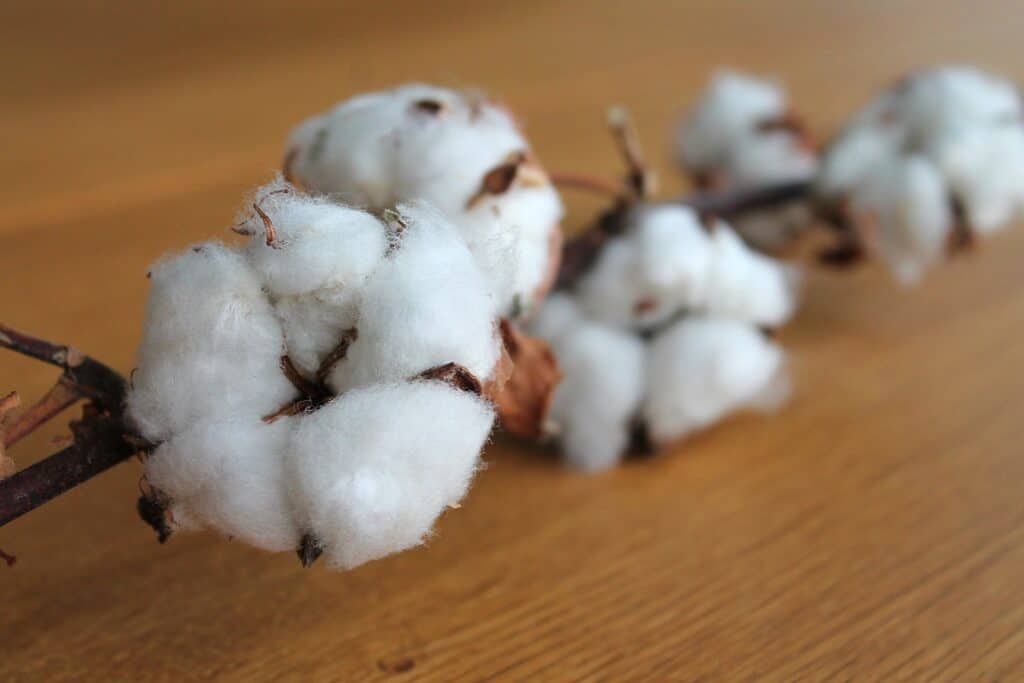
What is a good price for cotton fabric?
Cotton fabric will on average range from $3-$12, sometimes more depending on the surcharge of the precut built into the pricing, as well as current high demands (with global consumption exceeding 119.4 million bales harvested in the 2021/22 year) – the high price of cotton is not expected to go down anytime soon.
Figures are based on the “Cotton Market Fundamentals & Price Outlook” shown within the Monthly Economic Letter by Cotton Incoperate.com
The world can’t get enough of cotton these days it seems, and with the late turn of this new decade (along with some “cootie” driven world events) the pricing to meet demand has only gone up.
Though there are a few variables to keep in mind when eyeing cotton prices as the price can vary from country to country, region to region, even suburb to suburb!

Overall, you’re better off going in with an already general idea of the cost – and with it – the relative prices found within your area, as this will help you know whether or not you’re paying a fair price.
So find the average price in your area, and be ready to pay something along those lines. Just don’t expect identical prices down to the last cent, as you’ll likely waste the price difference in gas money trying to chase down a better bargain anyways.
Important to note: Some shops will average their prices, marking up older fabrics in order to keep the price down on newer fabrics, whilst others will put a more honest price on newer fabrics (whilst keeping the older ones fixed at their old price.)
So make sure you go to a store that you trust.
Style tip: When viewing fabrics in yoour LQS (Local Quilt Shop) store, always hold the end of the fabric on bolt up towards the light, if its see-through then that means its likely lower quality, so toss it!
Is cotton the most popular fabric?
Cotton fibers (especially from organic cotton) are longer and more durable and are a fabric that is easy to blend with a variety of other materials making it an extremely popular fabric around the world. It also has many flexible properties, takes dye easily, is durable, breathable, and resists abrasions.
All the bed sheets, t-shirts, socks, and your underwear (probably) are made from cotton – which could give it a bad and/or good rep depending on what cotton item specifically you’ve run into. However one thing’s for sure…
It’s as popular as toys “made in China.”
Its overall fabric profile means that rich and poor can afford some variation of cotton, with a price point to fit everybody’s needs everywhere on earth.
Reasons why cotton is so popular worldwide:
- Absorbs up to 27 times its own weight
- Is easy to launder
- Takes dye easily, good color retention
- Is durable and strong
- Conducts heat well
- Resists abrasion
- Resists pilling and moths
- Is easy to handle and sew
Is cotton a luxury material?
Specific types of cotton (like Sea Island Cotton) can be classified as a luxury material, as they have the prerequisites necessary to be deemed a “luxury material”, such as high fiber quality and strength, spinning capacity, and ability to work well in blends.
In another post of mine titled The Ultimate Guide to Suit Fabrics, I went over the differentiating factors that made up luxury and nonluxury materials – a factor of this was the cost of production and production quality of “luxury” materials as a whole.
As in – how much effort does it take to actually produce any such luxury materials and is there a differentiating and perhaps costlier method to producing such types of materials?
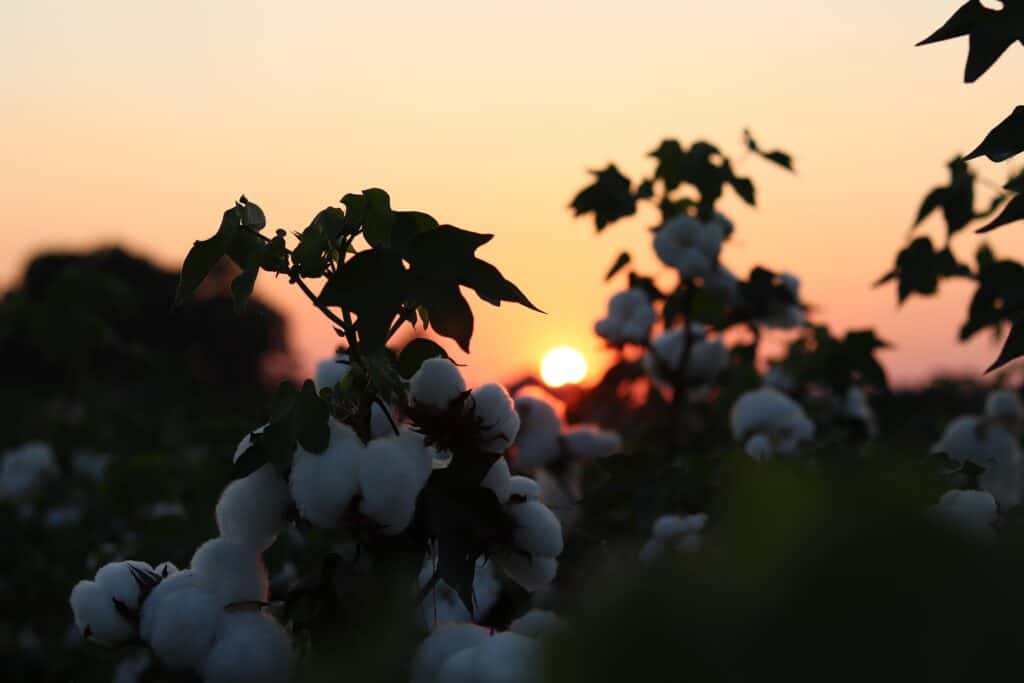
As it is known, there are a few types of luxury fabrics around the world, from Sea Island cotton to Merino wool (link to the Ultimate Merino Wool Guide), and even Vicuna – there are a few standards by which to gauge whether something can be deemed a “luxury material.”
Key traits and/or requirements worldwide for luxury fibers take into account such factors like fiber quality, whether it was grown organically or not, and if the fiber was granted a Global Organic Textile Standard (GOTS) certificate – the purpose being to ensure its organic status of textiles from start to finish (from socially responsible harvesting and manufacturing, as well as the involvement of fair trade labor.)
Like the back of your powdered coffee can, these days it’s all about the “story.” It’s about knowing where your “stuff” comes from and providing credible assurance to the end consumer who buys such luxury items.
Sea island cotton (whilst not commonly brought up in the same conversation) can be considered a “luxury” material thanks to its cultivated ELS fibers (extra-long-staple cotton) – this will reflect in its higher price mark up.
Is cotton renewable or finite?
Cotton is a renewable fiber and one that has been in use for over 7000 years. It differs from fossil-based fibers as cotton is a seed-based plant, and one that is cycled throughout its use, from its seeds to its growth as a plant, to harvesting the lint from the plant itself – the growth process is renewable and sustainable.
Cotton is such a plant whereby not one ounce of the plant is wasted, as the entire damn thing is so useful, and can serve a variety of purposes. The fiber or lint itself can provide cellulose used in making plastics and explosives.
The cotton stalk on the other hand is used for the manufacture of particle boards, preparation of pulp and paper, and micro-crystalline cellulose for the growing of edible mushrooms!
This is why there is a difference between conventionally grown cotton and organic cotton, as the latter seeks to make the textile business more sustainable long term, which ultimately will help the planet long term thanks to better farming and harvesting practices.
However you will pay a higher premium for better “eco-friendly” organic cotton, as the care put into such products will be more labor demanding than that of conventionally grown cotton which goes through fewer lengths to grow in a sustainable manner (which ultimately means it gets to cut costs, making it cheaper for the end consumer.)
Which is the best variety of cotton in the world?
There’s a variety of cotton in the world with varying qualities and fiber lengths, though there are a few types of cotton that are a cut above the rest.
Egyptian cotton is the best variety of cotton in the world (consisting of about 10% of all cotton produced worldwide) due to its longer fiber size, superior durability (thanks to the density of its threads ), and incredible softness. The second best would be the lesser costly Pima cotton.
Though coming in near second is pima cotton. This is a preferred sheet material due to the lesser costs than Egyptian cotton, however, this fabric is often mixed with a high count of standard cotton, making it effectively not as soft or durable.
But don’t fret, as both Egyptian and Pima cotton consists of high-quality fibers, with only a small number of differences between the two.
Does cotton stretch?
Cotton stretches over time due to the moisture it absorbs, causing its fibers to inadvertently enlarge as a result. Cotton can be even more susceptible to stretching if it the cotton itself is blended with such things as stretch fabric, and/or if it is woven in certain ways – all this can play a part.
Cotton itself doens’t stetch much compared to other fabrics thanks to its plant based rigid fibres. Such things like these natrually hold steadfast and grow upright out in the enivorment – the individual fibers itself is what helps to give the plants their strucutre.
Cotton also isn’t much for elasticity as it doesn’t have an elastic stretch, it is only over time (thanks to the above mentioned factors) that causes it to elongate and stretch.
This is a unique feature in cotton, due to its ability to “loosen up” with more wear – this why many prefer cotton over fabrics.
So remember this as you wear cotton clothing, the more you wear it, the more it’ll (slowly) stretch, causing its original shape to be altered from when you first purchased it, making this fabric possibly more suited to some than others.
Though this ability also pays off in other ways, as its elasticity from “wear and tear’ is also what affords it the ability to be less susceptible to sudden tears, as compared to other fabrics.
This could influence your decision in buying cotton clothing and how much you will spend overall – from its superior ability to be more “tear-proof” than other fabrics, to its fatal flaw of changing shape over time.
These are some things that must be considered.
Is cotton strong?
Cotton is a moderately strong fiber when dry, with a tenacity of 3-5 gm/den (direct measure of linear density), though its strength increases greatly with moisture thanks to its fiber characteristics which increases the degree of crystallinity and hydrogen bonding between the molecules in the crystalline areas in cotton.
Basically the cotton by itself contains a certain degree of structural order (as it is in all solids), however when it gets wet, atoms within the cotton fibers tighten up EVEN more, and basically the entirety of the “structural order” inside the cotton becomes EVEN more tightly packed together.
The dumbest way I could phrase it is saying to imagine each of your hands as one atom, then proceed to hold your hands together (like two “atoms” coming together), then imagine if they got wet and for some reason this caused you to clamp your hands together even tighter (thereby strengthening the overall conjointment of both “atoms” A.K.A. your hands) = this basically is what happens to cotton when wet.
Types of cotton and what they are
There are four types of main cotton available in stores, whilst there are more than an astounding 135 types of cotton varieties worldwide.
Below are the four most common types of cotton:
- Upland Cotton (Gossypium hirsutum) – short cotton fibers, common for everyday affordable products. Most common type of cotton in the U.S. (95%)
- Pima cotton A.K.A. Extra long-staple cotton (Gossypium barbadense) – Considered the finest cotton on earth as an extra-long-staple ESL cotton.) Resistant to fraying, tearing, pilling, wrinkling, and fading.
- Egyptian cotton (Gossypium barbadense) – Extra long-staple cotton, super soft, high vibrancy, and performance.
(Only difference between Egyptian and Pima cotton is how there’re grown.)
- Acala Cotton (Gossypium Hirsutum) – among the highest quality Upland cotton’s in the world.
*Upland cotton is a widely cultivated American cotton plant incased you’re confused*
What does 100% cotton mean?
100% cotton” means that the fabric is not blended with any other textiles which by itself will mean that the fiber is finer ( densely packed), and more breathable. Also due to the finer fabric, 100% cotton will wrinkle more so than cotton mixed with other textiles like polyester.
If you want cotton in its purest form, then 100% cotton will be the way to go, however, such purity will mean (for practical sake) that this fabric will be a lot more prone to wrinkling (like French linen.)
100% cotton will also tend to be more expensive than synthetic blends,
Though when on the lookout, just note, that according to the Federal Trade Commission (link to official website), cotton can be labeled “100% cotton” and yet contain 50% Egyptian and 50% Upland cotton.
However, sheets that read (for eg.) 50% Egyptian and 50% Upland cotton, yet on the label read 100% Egyptian cotton = that is when it becomes unacceptable.
Is 100 cotton a good quality?
100% cotton will have varying degrees of quality, as this label also accounts for varying fiber combinations (such as 50% Egyptian cotton made with 50% Pima cotton) to come under the 100% cotton label, according to Federal Trade Commission guidelines.
Click here to view more about the guideline on clothing and textiles (link to official FTC.gov website.)
Part of the reason why cotton is beloved by all is because of its extremely adaptive nature, as it can not only be used for so much, but it can also be blended with so much.
So while 100% cotton probably will be of good quality, much of this label will not take into account the varying factors that this label legally permits (such as the combination of varying fiber types and how that contributes to the overall finalized “100% cotton product.”
Such factors can affect the price of your cotton significantly, so make sure to always check the label and the make-up of your cotton fabric, as the name under which it is sold could be misleading (which will ultimately effect the final price.)
Why is 100 cotton so expensive?
100% cotton is more expensive as the “100%” labeling means it is not blended with any other “lesser” textiles like polyester, rayon, etc. This ensures denser fiber integrity and breathability due to the higher premium of materials used.
Though this rating is not to be confused with the “100%” labeling to mean it is made with only one type of textile necessarily. As mixing materials of similar caliber in terms of quality like Egyptian and Pima would constitute to be labeled under “100% cotton”, depending on the brand.
So best not always rely on the labeling outright when looking for your next tee, and instead focus on what’s exactly in the clothes you buy.
Is 100% cotton good for skin
100% cotton is good for the skin as cotton is an all-natural fabric that is also hypoallergenic, meaning this textile is great as a natural material for people prone to allergies, 100% cotton also means that this material will contain 100% denser fibers making it breathable and moisture-wicking.
This is why the “100%” labeling on cotton clothes usually will cost more, as you’ll likely inherit more of the benefits that come from wearing clothing of just one or two fibers, as opposed to blends like rayon which may be cheaper, but will have their own faults like being less breathable or durable, and may triggers skin irritations – especially in hotter climates.
What is better 100 cotton or 50/50 blend
Choosing between a 100% cotton or a 50/50 blend will depend on your goals. 100% cotton offers hypoallergenic advantages, is breathable, and is customizable, with more upkeep. A 50/50 blend however can be more tear-resistant, won’t shrink, wrinkle less, absorb less moisture, amongst other things.
Pricing of 50/50 blends will also tend to be cheaper, as the material used in combination with the cotton will likely be something along the lines of synthetic materials like rayon and/or polyester (among other things), which will lessen the higher pricing of cotton used.
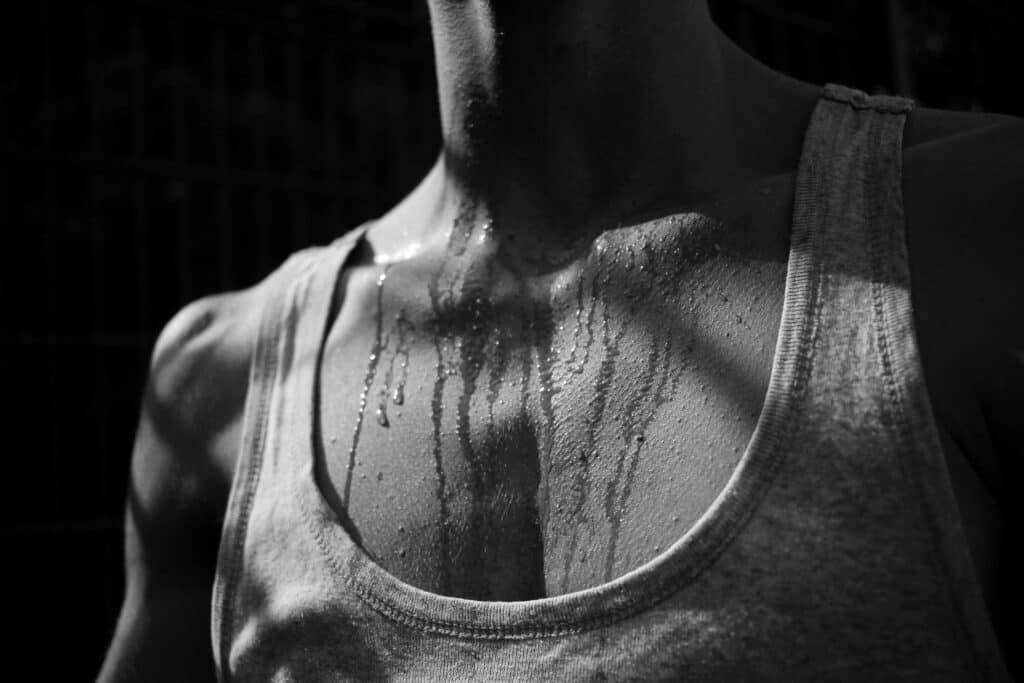
However, when to choose what will (again) depend on your goals and where you are. For me as a halfie kid growing up on the streets of tropical Asia, I’ve come to rely on certain fabrics over others, as due to the insane humidity levels – we have less leeway than our Western counterparts.
I’ve tended to rely on blends and/or oragnic fabrics that served a singular purpose: to hide my sweat.
Breathability is not so much an issue, rather than it is to be able to hide my sweat stains. As nothing ruins a day at the office – a day on a date, or a day with friends – then it does when you show off your wonderous sweat.
Pros and cons about about 50/50 and 100% cotton
Keep in mind that the exact blend used will matter alot as to the end outcome, however this is a mere general list of what you could expect.
| 100% cotton is great for sensitive skin |
| 100% cotton has the highest breathability factor (if you care for being too hot) |
| 100% cotton is good for business wear (looks more professional and excels when more upkeep is done to maintain its look.) |
| 100% cotton holds screen printing better (50/50 blends must be more careful to avoid color bleeding.) If you need a logo or a design done, got for 100%. |
| 50/50 blends tend to be more versatile (as it inherits benefits of both fabrics.) Good for all-around clothing (sports, business.) |
| 50/50 blends do not fade as quickly due to the synthetic fibers helping to hold the material color over time (can handle frequent washing.) |
| 50/50 blends are often more durable (polyester/cotton blend for eg.), also won’t lose their shape as fast, as well as will not pill over time either (looks “new” for longer. |
| 50/50 blends will often be less prone to wrinkling, whereas 100% cotton wrinkles often. Less ironing involved. Can come out of the dryer “ready to go.” |
| 50/50 blend has easier maintenance (wash, care.) |
| 50/50 blends are less prone to stains than 100% cotton. |
| 50/50 blends are less breathable, however at the benefit of having higher wicking abilities (feel hotter but show less sweat.) |
| 50/50 blends have a tendency to shrink less. |
| 50/50 blends dispel heat less effectively, which makes it GREAT for keeping you warmer. |
My preferences when in Asia have been to rely on less breathability (meaning sweat would wick away from my body), and to rely more on fabrics that have great wicking properties, at the expense of not dispelling heat quite as well. As I care less about how I feel, and more about how I look.
(I’m aware that out of context this phrase could sound terrible.)
Hands down if you care about showing your sweat, throw 100% cotton down the toilet and opt for a blend of some sort to “hide your sweat more effectively.
Pro tip: I often go Linen due to its incredible wicking properties, hands down my favorite material to wear in hotter climates.
Is 95% cotton 5% spandex stretchy?
This a common fabric combination that you’ll see on the labeling of many clothing, and so it makes sense to familiarize yourself on what this actually means.
95% cotton 5% spandex will give the fabric some stretch, however, it will not noticeably affect the fabric much. Generally, between 2-5% of spandex is used so as to not hamper the properties of a major fabric.
Style tip: Since the spandex is the minority material used, let the other fibers that make up the majority of the material dictate how you care for them (i.e. if the fabric is primarily cotton, then follow care instructions for cotton, etc.)
How do you tell if fabric is cotton or a blend?
Due to the finer, more denser fibers, cotton should be more distinguishable because of its softness, as compared to a blend, as well as pure cotton should take longer to dry when wet than a blend as it is a anti-moisture wicking fabric, which is highly absorbent in nature.
Cotton in general is softer and has more texture than many other textiles, its a little bit more “rough”, and less “smooth” to the touch than say a polyester blend. Though don’t be surprised if you get it wrong, as it’s not always as simple as that.
Many think that another way to test this method is through the “burn test”, whereby you would burn the fabric to see the manner through which the textile would burn.
However, the “burn test” only conducive to finding out if you’re working with a natural or semi-natural fiber, as almost all-natural fibers and semi-natural fibers burn the same way cotton does.
“You have achieved monetary respite.”
–The King (2019)
You can breathe well at the thought of knowing that you needn’t pay a duke’s wages for prime threaded cotton, simply follow the guide above to know how to get the best fabric and/or fabric blend to suit your needs – on a budget.
Stay Rogue.

